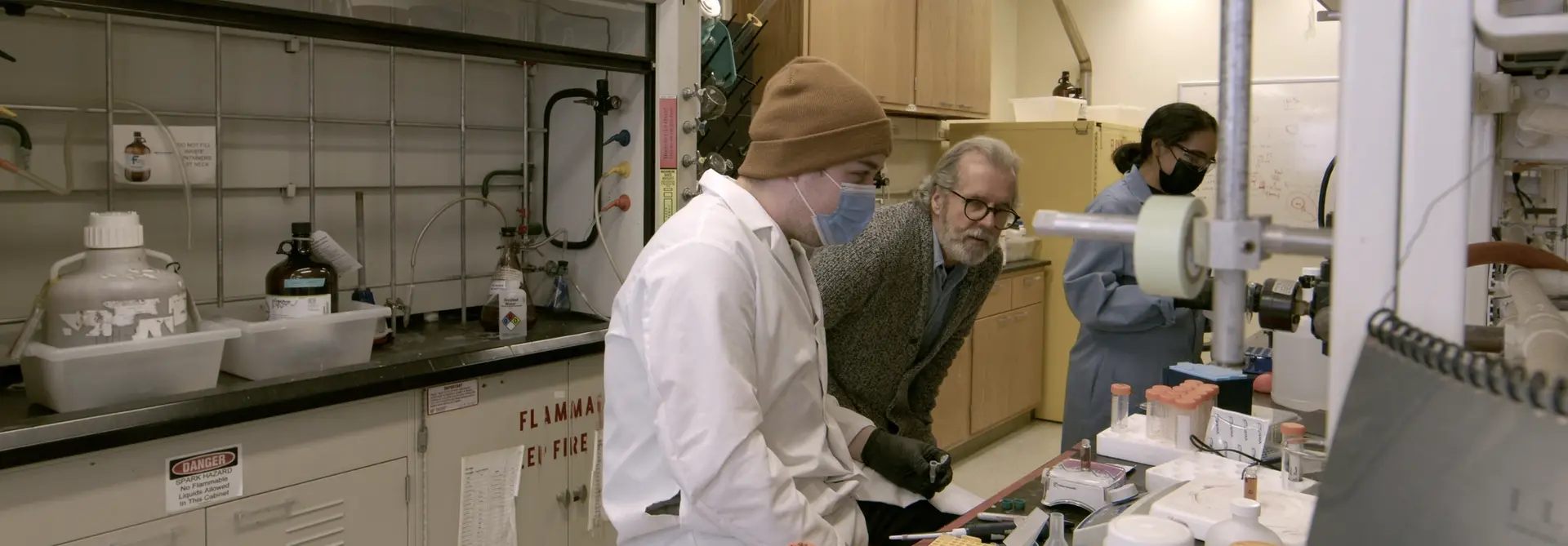La Academia Noruega de Ciencias y Letras ha galardonado con el “2022 Kavli Prize on Nanoscience” a un grupo de investigadores y científicos de diferentes países. En su mención de los fundamentos del Premio, el Comité expresa: “Interactuamos con los materiales a través de sus superficies. El premio “2022 Kavli on Nanociencias” honra a cuatro pioneros, que crearon recubrimientos a escala molecular para superficies, que permiten un nivel de control e ingeniería sin precedentes hasta la fecha, sobre las propiedades de las mismas. Su trabajo ha transformado la ciencia de las superficies y ha dado lugar a aplicaciones que regulan nuestra vida cotidiana, en áreas que van desde el diagnóstico médico hasta los dispositivos semiconductores”.
Citation from the Committee
We interact with materials through their surfaces. The 2022 Kavli Prize in Nanoscience honors four pioneers that created molecular scale coatings for surfaces which enable unprecedented control and engineering of surface properties. Their work transformed surface science and has led to applications shaping our daily lives in areas from medical diagnostics to semiconductor devices.
The concept of organized monolayer films was introduced in the 1930s at liquid-gas interfaces (Langmuir-Blodgett films) [1,2]. In 1946 a process of adsorption of monolayer films on substrates directly from solvents was described [3]. Jacob Sagiv built on these ideas and in 1980 published work which demonstrated unambiguously that molecules with silane termination groups could yield well-defined, covalently bonded monolayer films on surfaces terminated with oxygen [4]. This was a crucial step because most surfaces are coated with a natural oxide layer at ambient conditions. He also showed that different types of molecules could be incorporated within SAMs to modify and/or add functionalities, e.g., fluorescence, and that the physical phenomenon of wetting could be controlled and tailored using SAMs.
In 1983 Ralph Nuzzo and David Allara [5] demonstrated the first SAMs strongly bound to bare metal surfaces. They did this using sulfur-functionalized long carbon chain molecules to create ordered two-dimensional self-assemblies on highly crystalline gold films. They established that SAMs can be characterized by infrared and other optical spectroscopies and deduced the packing and orientation of the SAMs constituent molecules including their functional groups. This generated a deep scientific understanding which enabled the rational design of SAMs with specific functionalities.
George Whitesides and his team were responsible for many innovations which consolidated SAMs as a field of nanoscience and engineering. Of particular significance was the introduction of patterning of, with, and using SAMs [6-8]. With this work they initiated the areas of soft lithography, microcontact printing, and the use of SAMs as resists in lithographic nanofabrication, all crucial enablers of today´s high-tech industries. SAMs are used extensively in medical diagnostics, pharmacology, biosensors, chemical sensors, printers, electronics manufacturing, paints, solar cells, and batteries. There are more than ten thousand SAM-related patents and SAMs have enabled numerous multi-billion-dollar commercial markets.
Jacob Sagiv: For the fabrication of functionalised and mixed monolayer SAMs covalently bonded to oxide surfaces.
Ralph Nuzzo: For the invention of SAMs strongly bound to bare metal surfaces and subsequent experiments exploiting that invention.
David Allara: For determining the molecular structure of SAMs using optical spectroscopies and other characterisation techniques.
George Whitesides: For leading the development of multiple applications and innovations of SAMs, in particular the invention of patterning of, with and using SAMs.
1. Blodgett KB. Films built by depositing successive monomolecular layers on a solid surface. J. Am. Chem. Soc. 1935, 57(1): 1007-1022.
2. Blodgett KB, Langmuir I. Built-up films of barium stearate and their optical properties. Physical Review 1937, 51(11): 0964-0982.
3. W. C. Biglow, D. L. Pickett and W. A. Zisman, Oleophobic Monolayers. I. Films adsorbed from solution in non-polar liquids, Journal of Colloid Science, 1, 513-538, 1946
4. J. Sagiv, Organized Monolayers by Adsorption, 1. Formation and Structure of Oleophobic Mixed Monolayers on Solid Surfaces, J. Am. Chem. Soc., 102, 92-98, 1980
5. R. G. Nuzzo and D. L. Allara, J. Am. Chem. Soc., 105, 4481-4483, 1983
6. Kumar A, Biebuyck HA, Abbott NL, Whitesides GM. THE USE OF SELF-ASSEMBLED MONOLAYERS AND A SELECTIVE ETCH TO GENERATE PATTERNED GOLD FEATURES. Journal of the American Chemical Society 1992, 114(23): 9188-9189.
7. Kumar A, Whitesides GM. FEATURES OF GOLD HAVING MICROMETER TO CENTIMETER DIMENSIONS CAN BE FORMED THROUGH A COMBINATION OF STAMPING WITH AN ELASTOMERIC STAMP AND AN AK.ANETHIOL INK FOLLOWED BY CHEMICAL ETCHING. Applied Physics Letters 1993, 63(14): 2002-2004.
8. Smith RK, Lewis PA, Weiss PS. Patterning self-assembled monolayers. Progress in Surface Science 2004, 75(1-2): 1-68.
Fuente: https://www.kavliprize.org


